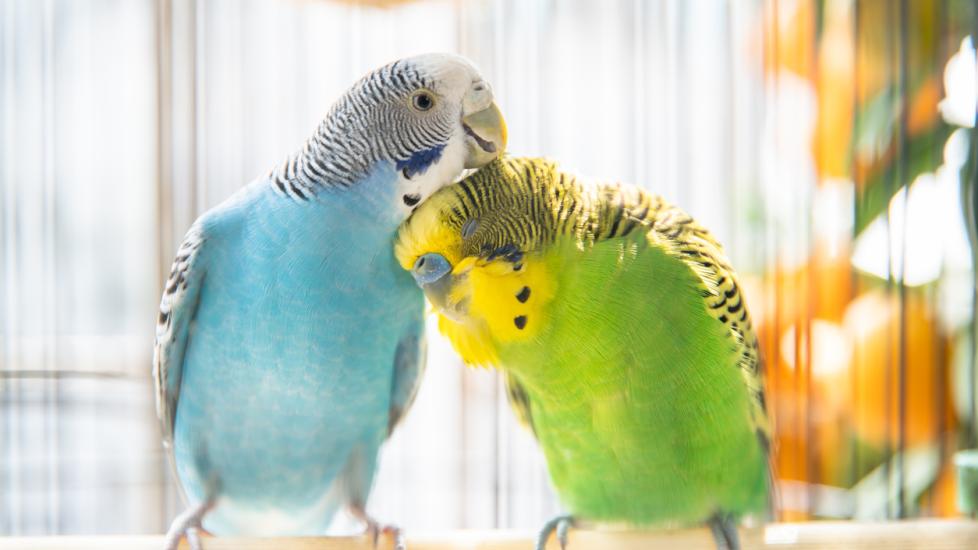How Long Do Parakeets Live?
Parakeets are great beginner birds for any pet lover that is interested in exploring birds as companions. As with any pet, life expectancy of a parakeet should be considered before adding one to your feathered family. Parakeets are charismatic and social birds but can require a lot of attention.
Parakeet Lifespan
The most common parakeet in captivity is the budgerigar or budgie. In captivity, budgies can live anywhere between 7-15 years of age. This is almost twice the life expectancy of a wild budgie. In the wild, budgies can live between 4-6 years because of threats of predation.
What Makes Some Parakeets Live Longer Than Others?
Multiple factors can influence how long a parakeet can live. Good husbandry is essential—if a parakeet does not have good husbandry provided for it, then their lifespan can be drastically shortened.
Nutrition is another important factor. There are many different parakeet diets available, and a balanced diet is necessary to help your budgie live a complete life.
Life expectancy of parakeets in also influenced by the presence of disease. Parakeets commonly suffer from:
-
Obesity
-
Scaly legs or face (Knemokotopes mites)
-
Chronic egg laying
-
Tumors
Parakeet Health and Disease Prevention
To keep your pet budgie healthy, prevention is key. Establishing a relationship with an experienced avian veterinarian will allow the best guidance to ensure your budgie has a fulfilling life. Birds can be good at hiding the fact they are sick, so if you sense they might be, reach out to your veterinarian.
Help monitor or prevent common diseases by providing your budgie with:
-
Regular visits to the veterinarian (yearly)
-
Yearly bloodwork and parasite screening
-
Quarantine of all new birds for at least 30 days
-
Cage enrichment to observe behavior
-
Desensitize your parakeet to handling which will make transport and visits to the veterinarian easier on them
Parakeet Diet
Parakeets are granivores, meaning they only eat grain and seed. Grain and seed diets in captivity are not the same as in the wild. Wild parakeets often graze on grass seeds, chenopod seeds, and grain crops. Although all seed diets are readily available for parakeets, many of them do not provide the proper protein, vitamins, and minerals to help parakeets live long lives.
Parakeets can develop numerous nutritional diseases when provided an imbalanced diet. Many seed diets do not have adequate calcium and vitamin A levels. A pelleted balanced diet is recommended to prevent any nutritional diseases. Seeds and millet can be used as behavioral enrichment to promote grazing behaviors.
Parakeet Habitat Recommendations
Parakeets should be provided the largest habitat possible. Cage dimensions should be a minimum of 18 inches wide by 18 inches long. For parakeets, it is more important to have a cage that offers a good amount floor space. This will help encourage natural behaviors like foraging. Cage bars should be approximately 3/8 inches apart.
Parakeets should be provided with multiple perches of different sizes and oriented in different directions to mimic their natural environment. Perch diameter should be between 3/8–3/4 inches. Perches can be made from different soft or smooth materials. Any perches made from abrasive materials can lead to foot injuries, so be sure to inspect each perch before placing them in the cage.
How to Improve Your Parakeet's Lifespan
There are many ways that you can improve your parakeet’s health and happiness, which can lead to a longer lifespan. Always consult with your veterinarian to determine the best caring practices for your budgie. General tips may include:
-
Do your research before adding a parakeet to your family!
-
Ensure you can provide adequate care for one or multiple parakeets.
-
Provide complete nutrition daily
-
Provide free access to water
-
Provide adequate social interactions
-
Provide active foraging for this species
-
Offer mineral blocks, cuttlebones, and wood blocks to help keep their beak trimmed
-
Stay up to date on annual veterinary examinations (establish a relationship early with a veterinarian who has experience with birds)
-
Make sure to ask your veterinarian about routine bloodwork and parasite screening
-
Be sure to quarantine any incoming new pet birds within the home for at least 30 days.
References
-
Pollock C. Basic Information sheet: Parakeet. LafeberVet. 2012.
-
Tully TN. Birds. In: Mitchell M, Tully TN (eds). Manual of Exotic Pet Practice. St. Louis, MO: Saunders; 2008. Pp. 254, 270-271, 276.
Featured Image: iStock.com/wonry
